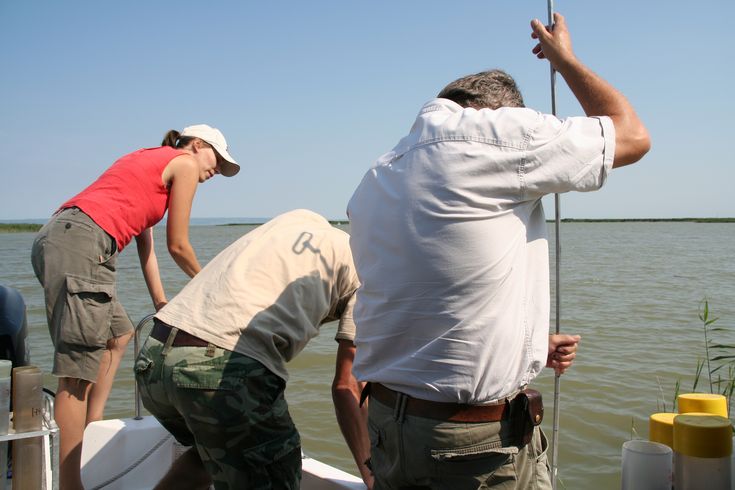17.01.2024 - Researchers constrain age of Lake Neusiedl for the first time

Based on the age of formation of minerals, it was possible to infer, that the lake existed 25,000 years ago.
Generally, lake deposits can be used to determine the onset of lake formation: sediment drill cores are commonly used to recover the infill of lake troughs. If the first (and lowest) sediment layer at the base is recovered, it records also the presence of water in the lake basin. If the sediment is suitable for age dating, the time of its deposition and the birth of the lake can be determined.
However, this is not as straightforward in the case of Lake Neusiedl, as its characteristics do not allow conventional methods of age determination. This specific lake is an extremely shallow lake, some might call it a giant puddle, with an average water depth of less than one metre and strong evaporation in the summer. Due to the shallow water depth, waves caused by wind often reach the bottom of the lake and cause the sediment to mix constantly. Consequently, there is no basal layer preserved for age dating. Until now, there has only been speculation as to when the water cover that we now call Lake Neusiedl actually existed.
Thanks to a new approach, researchers from the University of Natural Resources and Life Sciences Vienna (BOKU), together with colleagues from the Universities of Vienna and Innsbruck and Graz University of Technology, have now been able to issue a “birth certificate” for Lake Neusiedl, which states that a predecessor of today’s Lake Neusiedl, with a much larger surface extent, already existed around 25,000 years ago.
In Austria's largest lake, carbonate minerals (magnesium-rich calcite and protodolomite) form, which crystallise directly from the water caused by the special hydrochemistry. "Our hypothesis was therefore: if water is present, carbonate minerals will form, even if the mud layer at the bottom of the lake is constantly mixed. If this is true, then small minerals must be younger than larger ones," explains Stephanie Neuhuber from the Institute of Applied Geology at BOKU.
The researchers separated minerals from the top 20 centimetres of the sediment and divided them into 5 different grain sizes. Once they had determined the mineral types in each fraction, the carbonate minerals were radiocarbon-dated and other investigations were carried out to characterise the sediment, such as stable isotopes, and carbon content.
Results of the research confirmed the growth hypothesis: smaller minerals (smaller than 0.2 µm) are actually much younger than larger minerals (3 µm). As different sizes are dated, the growth rate of the minerals can be determined - it is an extremely slow linear increase of 200-600 nanometres per millennium. When interpreting this increase, it has to be considered that the lake has repeatedly dried up in the past, which has shortly interrupted mineral growth.
Because the linear growth is known, the beginning of the process, i.e. when a mineral starts to grow by the first atoms joining, can be calculated and resulted in a formation age of around 6600 BCE. This means that the lake has existed in its current form since this time.
"In old lake deposits found near the village of Jois, which are no longer covered with water today, an age of formation of around 25,000 years was determined. This means that the palaeo Lake Neusiedl, which had a much wider distribution, already existed at this time," says Neuhuber.
The research results were recently published in "Sedimentology". The project was funded by the University Anniversary Foundation of the City of Vienna and the Back to Research Grant (now: Maria Jahoda Grant) of the University of Vienna.
To the publication:
Stephanie Neuhuber, Susanne Gier, Erich Draganits, Peter Steier, Monika Bolka, Franz Ottner, Christoph Spötl, Dorothee Hippler, Patrick Meister
Radiocarbon ages of microcrystalline authigenic carbonate in Lake Neusiedl (Austria) suggest millennial-scale growth of Mg-calcite and protodolomite
https://onlinelibrary.wiley.com/doi/10.1111/sed.13161
Scientific contact:
Dr. Stephanie Neuhuber
Institute of Applied Geology (IAG)
University of Natural Resources and Life Sciences, Vienna
stephanie.neuhuber@boku.ac.at
+43 1 47654 - 87217
